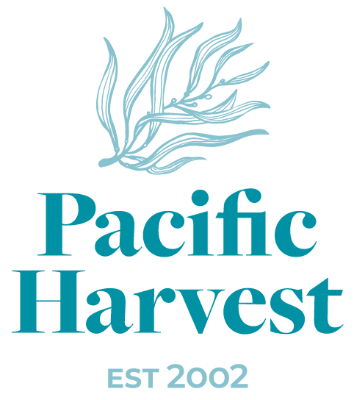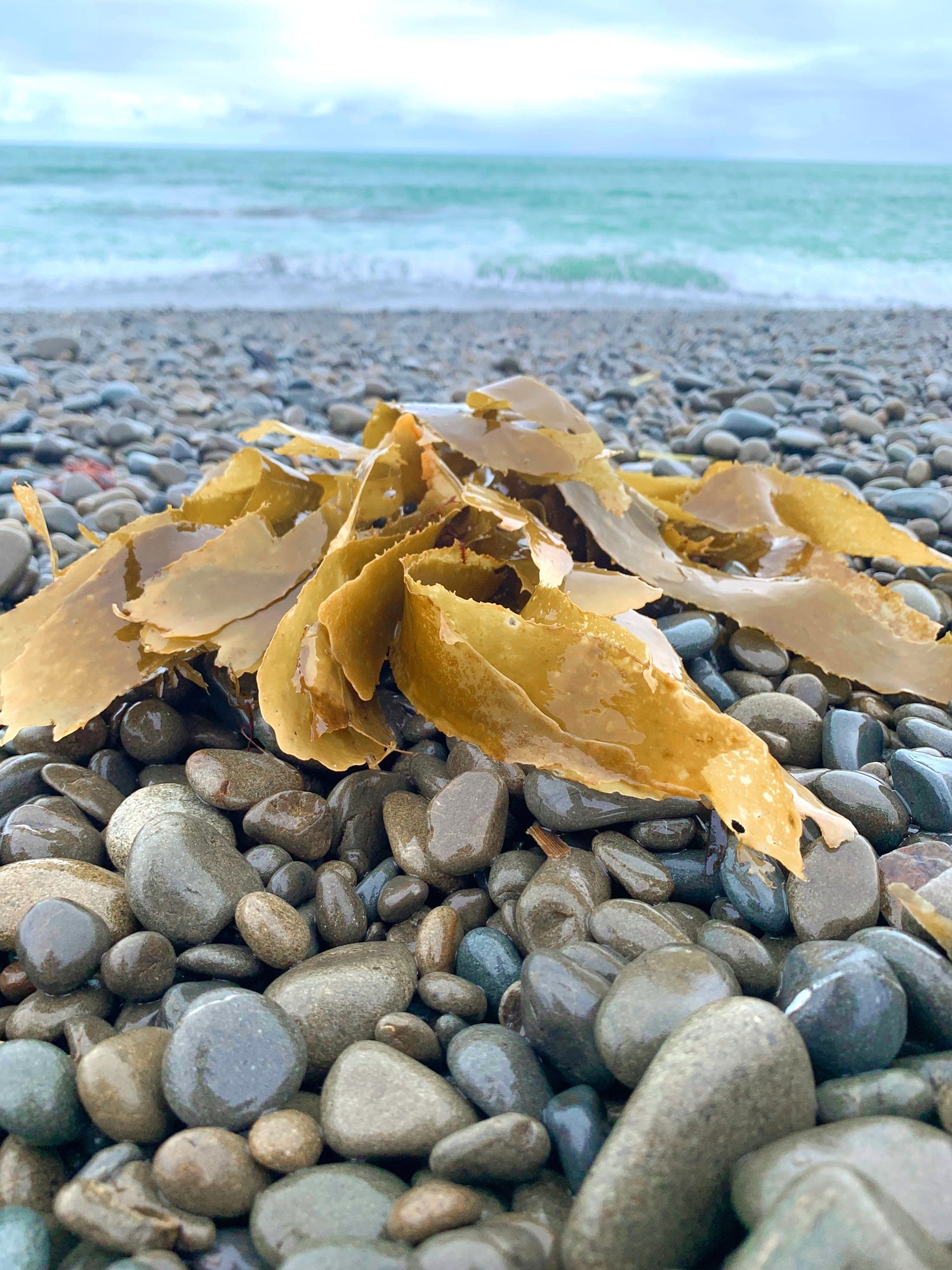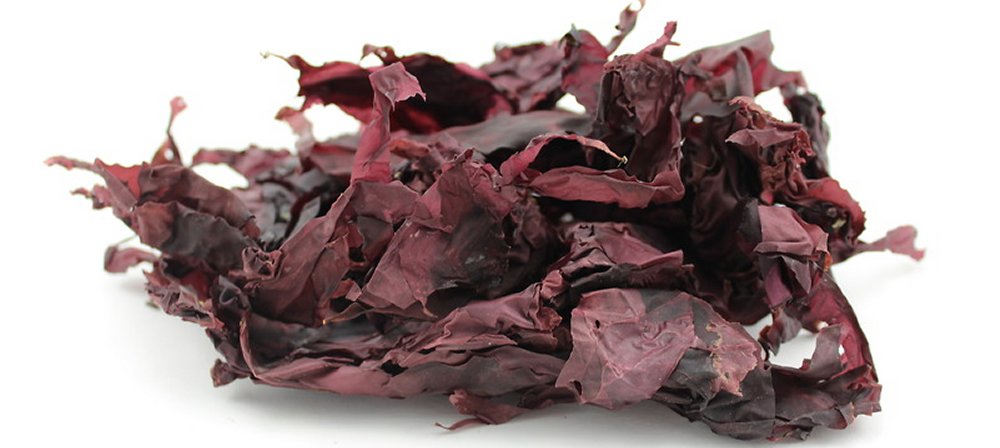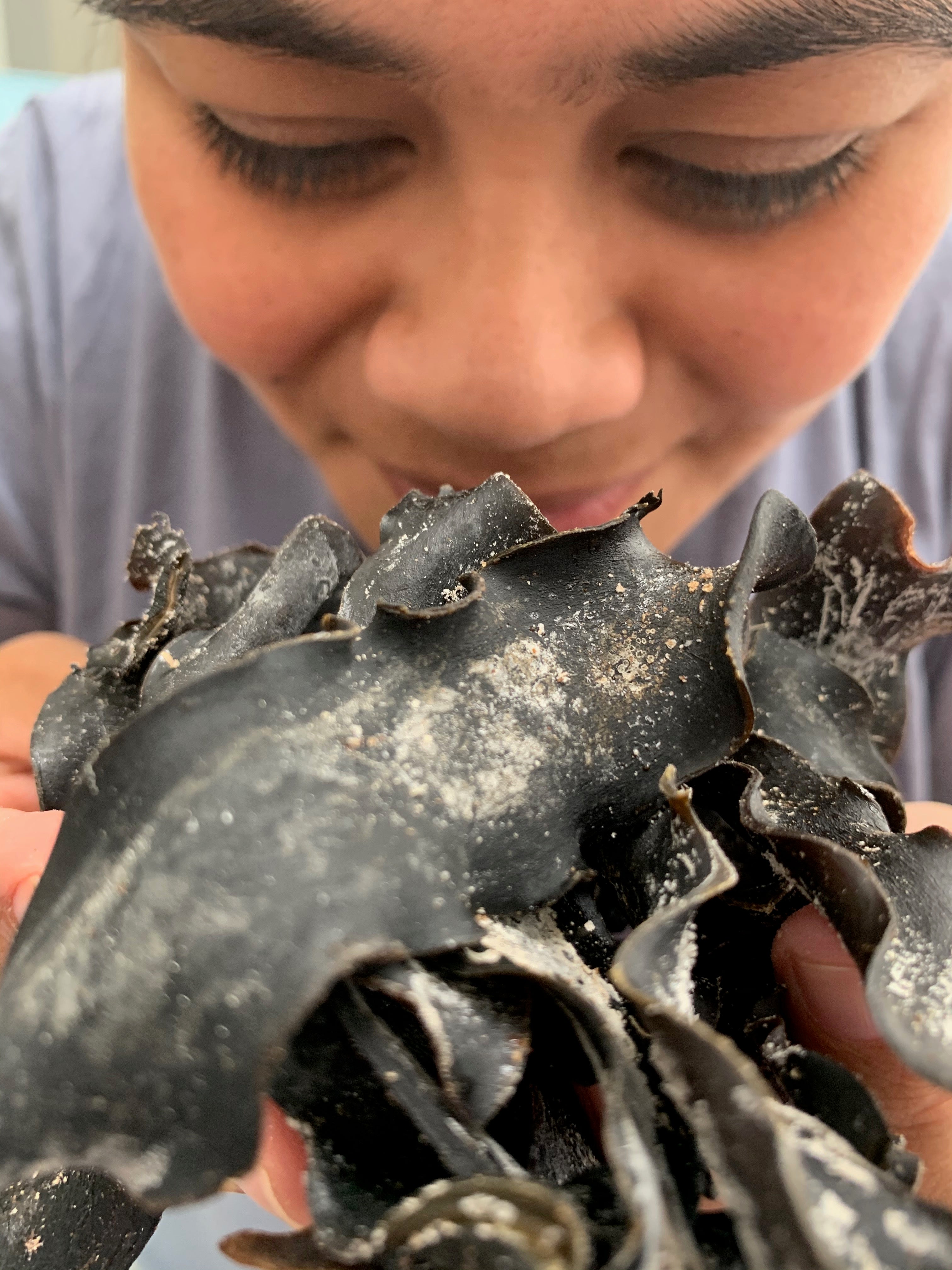Kelp is the collective name for approximately 300 species of brown seaweeds belonging to the order Laminariales. Kelps grow near the surface in coastal waters and near rocky plateaus and thrive in colder waters. Kelp is a highly edible sea vegetable that offers unmatched, naturally occurring iodine, as well as providing a wonderful umami flavour.
What Nutrients and Minerals Does Kelp Offer?
Kelp has exceptional levels of naturally occurring iodine, an essential mineral nutrient for optimal thyroid health. However, it’s not just iodine but relatively high concentrations of other minerals and trace elements, such as calcium, magnesium, potassium and zinc, which can also be found in most kelp species. Brown seaweeds, like Kelp, also contain other substances which may be vital in resolving degenerative diseases, including alginates (detox radiations and heavy metals), fucoidan (associated with cancer prevention and infections), Laminarin (cardiovascular health) and lignans. What Does Kelp Taste Like?
Kelp is a plant-based source of natural umami flavour. As a kelp frond (leaf) dries, an amino acid called glutamine rises to the leaf's surface as a fluffy white powder. This is the very powder the Japanese Scientist who invented monosodium glutamate (MSG), Kikunae Ikeda, was trying to isolate and duplicate in the laboratory. Japanese chefs, and others in the know, believe this naturally salty, umami flavour adds excellent depth and texture to meals without the need for chemical or highly processed seasonings.What are the essential health benefits of eating kelp?
Kelp your thyroid!
Help your thyroid perform optimally with a bit of kelp! This seaweed has the highest naturally occurring iodine of all seaweeds. An optimally functioning thyroid has far-reaching health benefits, such as balancing hormones, improved sleep, more efficient digestion, easier breathing, improved heart health and metabolism, muscle strength, regular menstrual cycles, and reduced cholesterol levels. Suppose you or a loved one suffers from hypothyroidism (underactive thyroid), a condition in which your thyroid gland doesn’t produce enough of certain crucial hormones. You may consider adding kelp to your diet rather than using a synthetic/chemically produced iodine supplement.
Kelp and Detox/Cleansing
A body of research supports the impact this great seaweed can have on removing radioactivity, heavy metals and toxins from the body. It is nourishing and soothing for the skin - customers using water they have soaked kombu in for regenerative DIY facials and beauty treatments to reduce acne.
Kelp as a Lower Sodium Alternative
Use kelp as a seasoning instead of chemically produced iodised salts. The kelp offers a far more comprehensive range of minerals and nutrients and delicious umami flavours to deepen stability.

Kelp contains enzymes that break down the indigestible sugars in cell walls that cause gas formation. Adding kelp during cooking can speed up cooking time and help combat digestive gas and bloating after consumption. When cooking dried beans, add a Kombu strip to the cooking water. Use kelp as a rub or marinade to tenderise meats before grilling or BBQing.
Is eating Kelp dangerous? Can I overeat?
On the flip side, if your thyroid is overactive (hyperthyroidism) or you suffer from immune diseases such as Graves Disease, please don’t dramatically increase your kelp intake without consulting a medical professional first. The higher iodine levels in kelp will likely be problematic in your situation.Symptoms of an overactive thyroid may include rapid heartbeat, weight loss, increased nervousness, anxiety, sweating, and difficulty sleeping, to name a few.
Before you increase your consumption of kelp, we strongly suggest you get a blood test done to check your thyroid level before eating lots of kelp, as the naturally high levels of iodine in kelp may exacerbate health issues. We follow these guidelines to determine recommended serving sizes and suggest you pay careful attention to the instructions on the packaging. Please note that each person is unique, so we can never comment on how much iodine you should consume daily - we suggest a medical professional is the best place to answer this question!
How to add kelp to everyday cooking
Pacific Harvest offers sea kelp, which has been sustainably harvested from the north island of New Zealand and air dried, then hand packed. In our opinion, this is the tastiest of all the kelps. We test all our seaweeds for contaminants by the Australia New Zealand Food Code.We grind Kelp into a kelp powder which makes a beautiful salt substitute for porridge or cooking, or an addition to your morning smoothie, or kelp granules, which are slightly higher ground (similar to pepper from a pepper grinder). This tends to be used more as a seasoning – before or during cooking. For your convenience, we have added a bit of natural flavouring to our kelp range and also offer an award-winning range of ‘artisan kelps':
- Chilli kelp (beautiful as a seasoning or rub for meat)
- Lemon kelp (delicious on chicken or fish)
- Garlic kelp (add to anything instead of garlic powder or salt).
Please remember you only need to eat a small amount of kelp to get your recommended daily intake (RDI) of iodine!

Visit our recipe section for more ideas on how to eat more kelp! Or download our recipe brochure here.
Note: The nutritional content of seaweeds can vary depending on several factors, including where they are harvested from, which part of the season they are harvested, how they are dried and more. The indicated mineral and nutrients in this article are gathered from several journals and published books on seaweeds over the years and are intended as a guide only. For more information, please refer to specific nutritional panels on each product you purchase.




